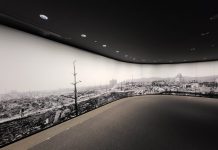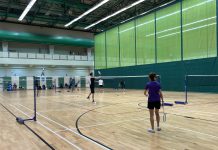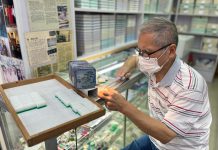Opportunities and challenges for Hong Kongers working in the Mainland
By Donna Shiu and Zoe So

It is 7.00 a.m. and the Lo Wu Control Point is bustling with people from all walks of life. Mixed in with the crowds of young students and cross-border parallel traders are thousands of white-collar workers. Some will return to Hong Kong the same evening, while others will stay on the Mainland for the week.
These cross-boundary Hong Kong workers are just the tip of the iceberg. Many others cross at the other five control points while some commute by plane. Some have even made the Mainland their home. According to the Census and Statistics Department, over 170,000 Hong Kong permanent residents now work in China either part-time or full-time.
In this year’s policy address, Chief Executive Leung Chun-ying urged Hong Kong’s young people to consider career opportunities in China. He cited the story of a young Hong Kong entrepreneur who started a business in the Mainland after finishing his master’s degree. This young person is said to be now running a HK$100 million a year wine and food import business in Guangxi.
While the identity of the said entrepreneur remains unknown, there is nothing new about Hong Kongers heading north for jobs. The trend was given a boost after the Mainland and Hong Kong Closer Economic Partnership Arrangement, or CEPA was signed in 2003. This gave Hong Kong’s goods and services preferential access to the mainland market and allowed for the mutual recognition of professional qualifications.
Indeed, the mainland market is a big draw for professionals like architect Philip Fung Kwok-on. Apart from working for a year in Hong Kong after his studies, followed by two years in Switzerland, Fung has spent the majority of his 13-year career in China. Having worked in Beijing, Shanghai and Shantou, Fung is now based in Shenzhen.
Fung says China’s vast area gives architects like himself more space to work with and the freedom to experiment with different types and styles of architecture. His latest project was a hot-spring villa in Chaozhou. He says the project would not be possible in Hong Kong as there is neither the space nor geological conditions for it. Instead, Fung says architects in Hong Kong are limited to designing commercial and residential estates and are under pressure from property developers to maximise floor areas.
That is not to say it has been an easy road to success for Fung. Even after he set up his own studio, Elsedesign, in Shanghai in 2007, he was still required to cooperate with a mainland firm. The mainland company does all the official paperwork and, on paper, Fung works as a design consultant.
Under CEPA, over 412 individual architects registered in Hong Kong obtained the Mainland’s “class one” architect qualification between 2004 and 2009 but they are still barred from setting up their own practice there. Starting from 2011, architects registered in Hong Kong have to take another exam in order to set up their own business and even then, only in Guangdong.
According to the Hong Kong Institute of Architects (HKIA), more than 200 Hong Kong architects have taken the exam but none have been approved to set up shop. An HKIA survey in 2013 found fewer than 10 Hong Kong architects working in Guangdong after qualifying through CEPA.







































